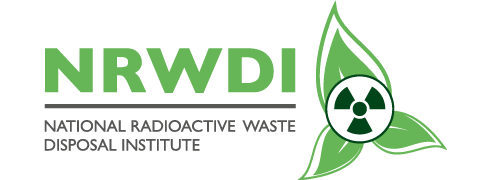pre-disposal operations
DISPOSAL CONCEPT
The current disposal concept at Vaalputs is based on shallow land disposal consisting of near surface trenches few metres deep but above the groundwater table.
Disposal Timeline
Disposal Operations (In a nutshell)
Receiving and inspecting drums.

Offloading of consignment.
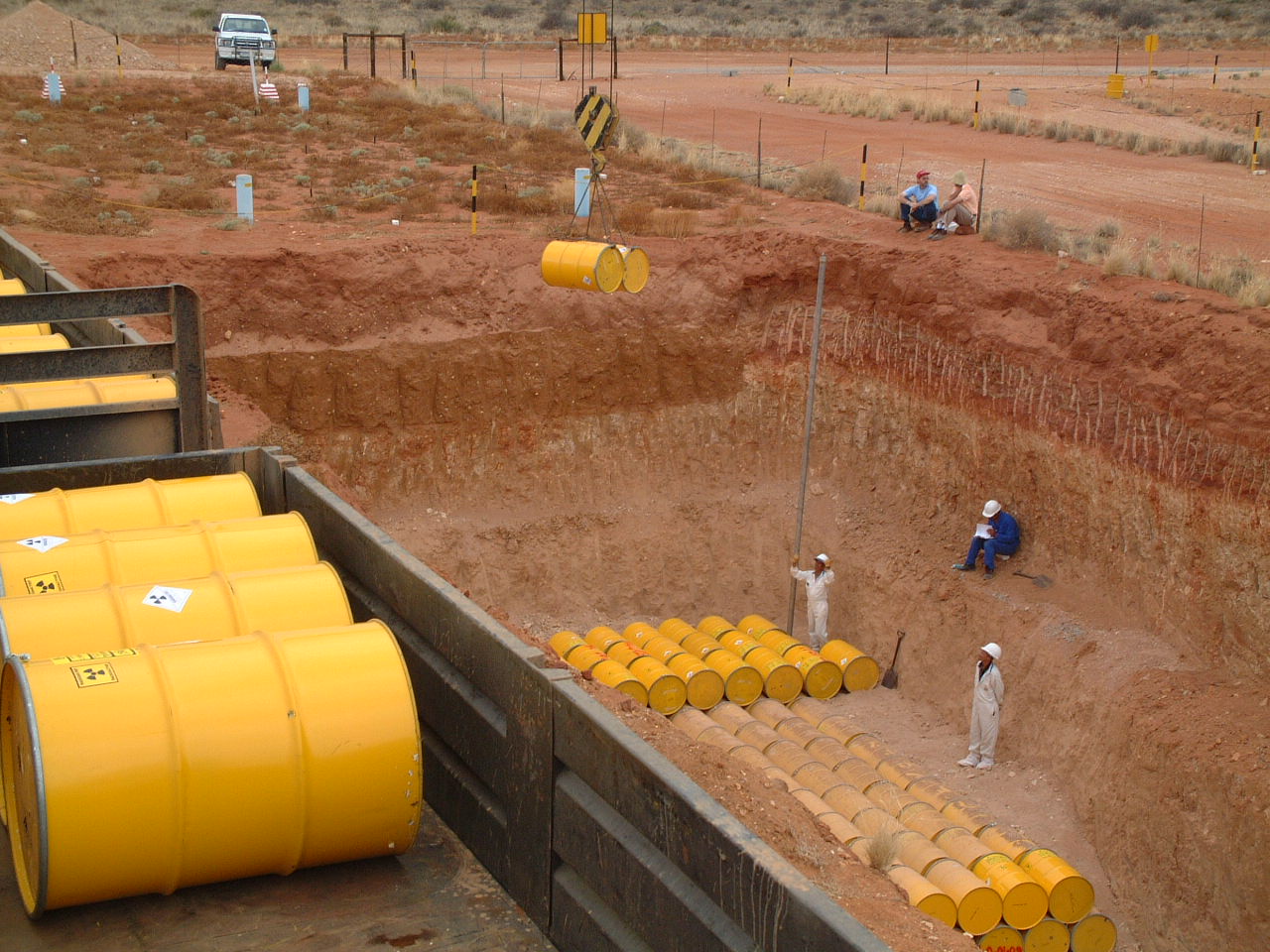
Placing of drums in trenches.
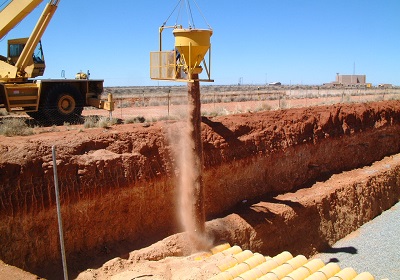
Before filling the trench.
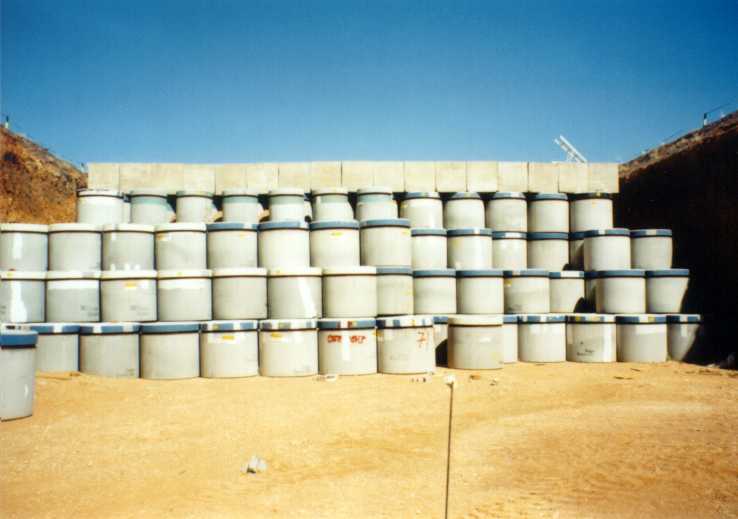
Covering drums with clay.

Starting of capping process.
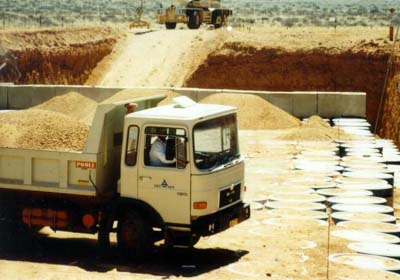
Capping Process.
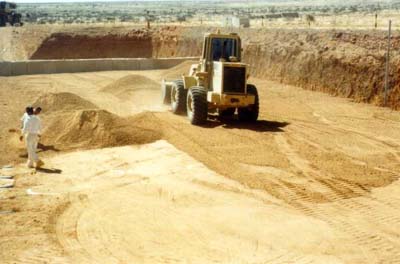
Rehabilited Trench.
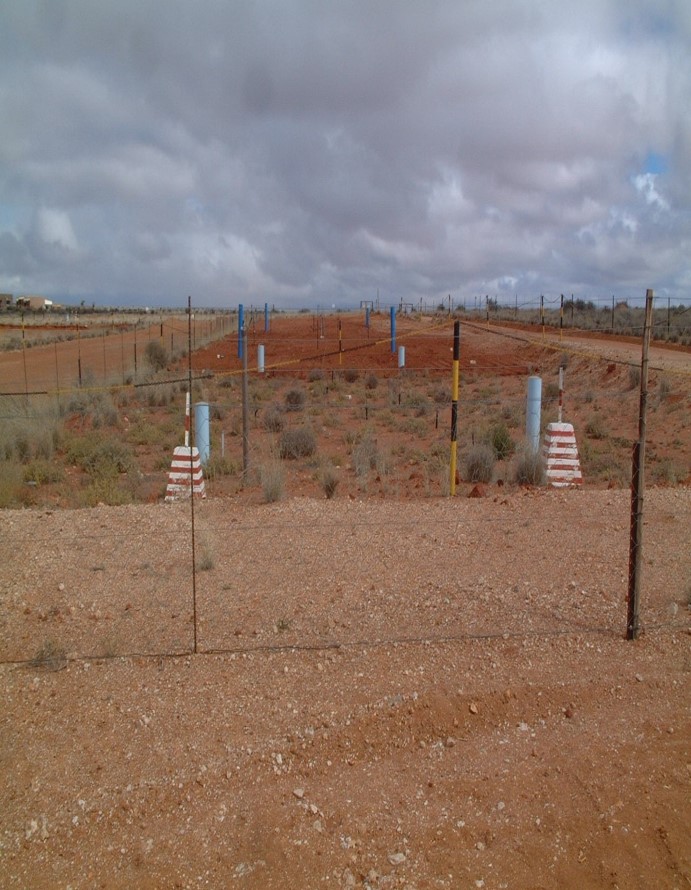
Restoring natural flora.

Under its nuclear installation license Vaalputs disposes of Low Level Waste (LLW), which currently mainly originates from Koeberg Nuclear Power Station and Necsa. Operations carried out at Vaalputs are fully described in the various operational procedures for Vaalputs. Compliance with quality requirements is in accordance with the Vaalputs QMS and is based on the ISO 9001 (2008) quality principles as set out in the Vaalputs Integrated Management System.
Radiological safety is implemented through the nuclear license requirements for Vaalputs as per Nuclear Installation License (NIL-28) and is carried out under the supervision of the Radiation Protection Officer (RPO). The RPO ensures that radiological hazards at Vaalputs are identified, measured and controlled in accordance with the radiation protection programme requirements. Conventional safety is implemented in accordance with the Occupational Health and Safety Act and Regulations (Act 85 of 1993) [57] and is applied through the corporate SHEQ-INS system of documents.
- Pre-shipment inspections are done at the predisposal operator’s site on a scheduled or ad-hoc basis.
- The required documentation is forwarded to Vaalputs and compliance with the waste acceptance criteria is checked prior to the waste arriving at Vaalputs.
- The waste is despatched by the predisposal operator.
- The waste arrives at Vaalputs and is only handled during normal working hours.
- A receiving inspection consisting of quality and radiological checks is performed on the documentation, transport vehicle, transport personnel and waste consignment.
- The RPO performs the prescribed radiological tests on the vehicle and waste packages in the vehicle reception area.
- If the results of these tests comply with the acceptance criteria the consignment is transported to the appropriate trench for final disposal, otherwise a non-conformance is registered and the appropriate corrective action implemented (e.g., decontamination of the waste packages and/or the vehicle, postponement of final disposal pending corrective action, etc.).
- Waste packages are covered within one month (steel containers) or two months (concrete containers) after emplacement.
- Trenches are backfilled and capped using screened clay as soon as sufficient waste has been emplaced in the trenches to enable these operations to be carried out.
- After capping, the trenches are covered to an average depth of 50 cm with appropriate topsoil and stabilised with shallow-rooted vegetation.
Assessments
Sustainability and safety
Assessments conducted in the past have shown that the repository system has the following characteristics:
- Provides a high level of operational and long-term safety.
- Demonstrates compliance with performance standards, thus enhancing public confidence in the disposal system.
- Ensures safety without placing excessive financial burdens on the current and future generations.
- Prevents or substantially delays movement of water or radio nuclides toward the accessible environment.
- Incorporates the near field, geosphere and biosphere.
- Provides for the safe closure of the facility once all operations have ceased, given that the necessary after care measures are taken within the institutional control period.
Assessments
Vaalputs disposal concept demonstrating the near-field, geosphere and biosphere
The following properties, amongst others, ensure that the NBS is effective in confining and retarding nuclide migration:
- The disposal area forms part of a large alluvial fan.
- The trench area is in thick loamy clay with geotechnical properties that include: .
- Groundwater table at 55 m.
- High evaporation and transpiration rate.
- Clay contents that confines and retards nuclide migration.
- Slow underground water movement.
- Trivial vertical replenishment of aquifers.
- Few tectonic features in the alluvial fan.
- Low seismic activity.
Although the natural barrier system has been proven to be effective for providing isolation from the biosphere, it is deemed good practise to enhance the predictability of the overall multi barrier system by improving the integrity of the engineered barrier system (i.e., the quality of the waste packages). The engineered barrier system (waste package) comprises of two components, namely the immobilised wastes (i.e. waste form after conditioning) and the waste container.
